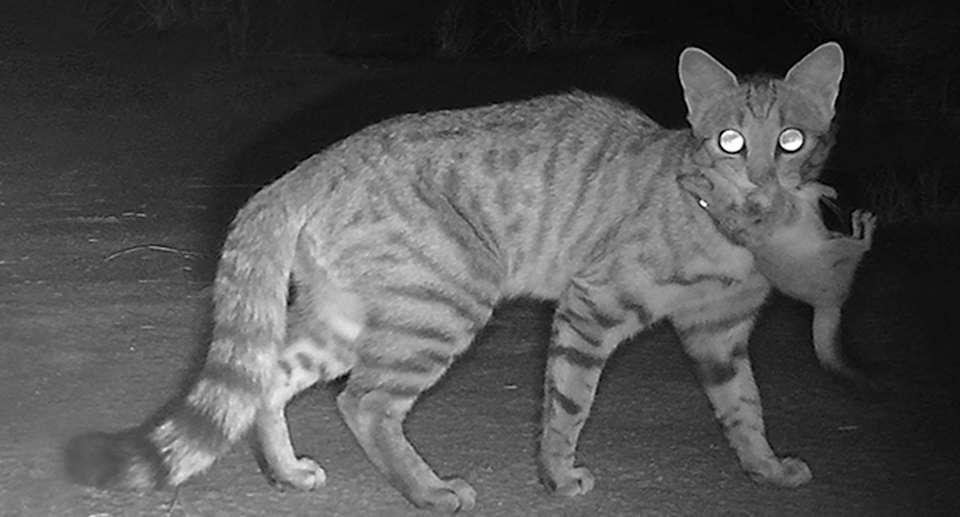An Australian council has taken a drastic move to halt the spread of an invasive predator by placing a strict ban on the species.
From next week, feral cats found at two waste depots will be trapped, seized or detained, and in some cases, euthanised. The decision comes as the Tasmanian council reports a “constant supply” of the invader surrounding the area, with both sites serving as a breeding ground for the species.
Across Australia, feral cats are one of the most successful and destructive invasive species and have contributed to the country’s status as having the worst mammal extinction rates in the world.
Meander Valley Council said the decision has been guided by expert advice as it aims to reduce risk to local wildlife, livestock, pets and public health. Andrea Dawkins, CEO of RSPCA Tasmania, told Yahoo News it “very much supports” the decision by the council.
“Feral cats are increasingly present around the waste depots, contributing to ecological impacts and public health concerns,” the council said in a statement.

Nationally, feral and domestic cats hunt and kill two billion native animals. Source: Australian Wildlife Conservancy
Cat owners warned as prohibition order put in place
The council has warned pet owners to ensure that their cats are desexed, microchipped and “safely contained at home”. In the Meander Valley council area, cats are not allowed to roam freely.
RSPCA’s Dawkins said the organisation advocates for the confinement of pet cats, “as this is the only way to ensure their cats’ safety.”
She explained that councils across Tasmania can declare areas of prohibition of cats, “but it has taken some time for them to utilise this mechanism”.
“A necessary provision in managing these projects is to adopt a humane approach and ensure that every step of the trapping project has a solid plan,” she said.
“This involves working closely with vets and Cat Management Facilities to ensure that cats have their health and sociability assessed quickly, and the appropriate next steps taken based on the veterinary advice.
Extent of feral cat problem across Australia
Landcare Tasmania Chief Executive Officer, Peter Stronach, previously described the issue of stray and feral cats in the region as “devastating” on wildlife, agricultural systems and human health through direct predation and disease.
Across the country, feral cats, together with foxes, have helped drive over 25 native species to extinction, and continue to threaten more than 100 others — including small marsupials, ground-nesting birds, and reptiles — many of which occur nowhere else in the world.
Estimates suggest they kill more than a billion native animals every year and cost the Aussie economy around $1 billion a year, including expenses for control efforts, ecological damage, and biodiversity loss.
“We know that feral cats and roaming pet cats are incredible hunters, incredible killers, and have had this enormous toll on wildlife,” Invasive Species Council CEO Jack Gough recently told Yahoo. He is calling for a national approach to feral and domestic cat containment.
Council’s responsibilities for cat owners include:
Containment: Owners must ensure their cats do not roam freely, particularly in designated wildlife protection areas.
Desexing and Microchipping: All cats over four months old must be desexed and microchipped, with some exemptions.
Breeding: To breed cats, you must be a registered breeder or have a cat breeding permit.
Cat Limit: You can keep up to four cats over four months old on your property without a permit.
Selling or Giving Away Cats: Cats must be over eight weeks old, desexed, microchipped, vaccinated, treated for worms, and free of external parasites.
Cat Control: In certain situations, you are allowed to trap, seize, and humanely destroy cats.
The two sites include Deloraine Waste Depot and Westbury Waste Depot in Tasmania. The prohibition, under the Cat Management Act 2009, will be in place from August 13.
Do you have a story tip? Email: newsroomau@yahoonews.com.
You can also follow us on Facebook, Instagram, TikTok, Twitter and YouTube.


